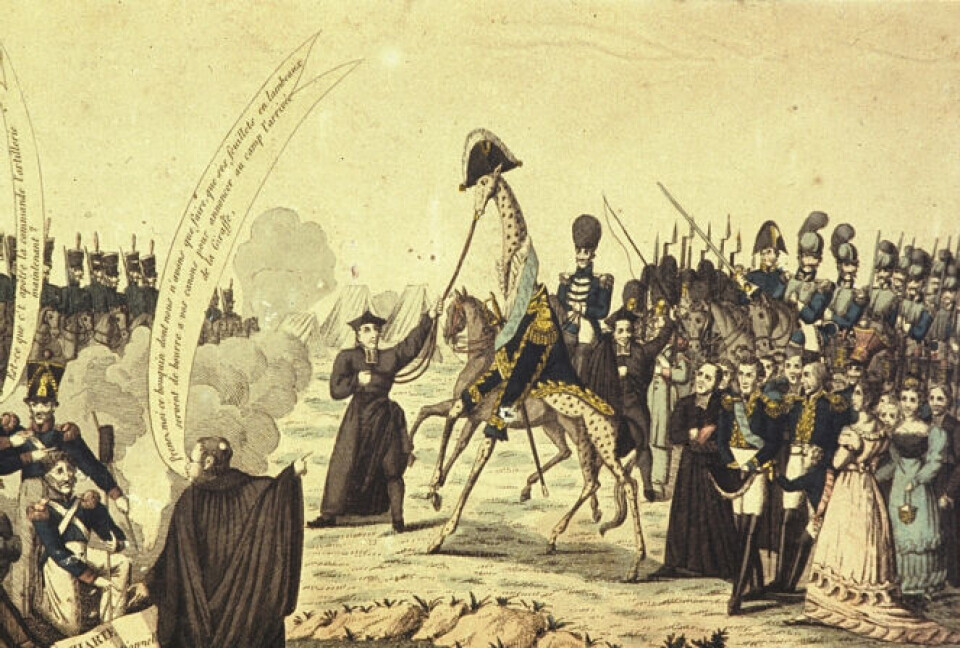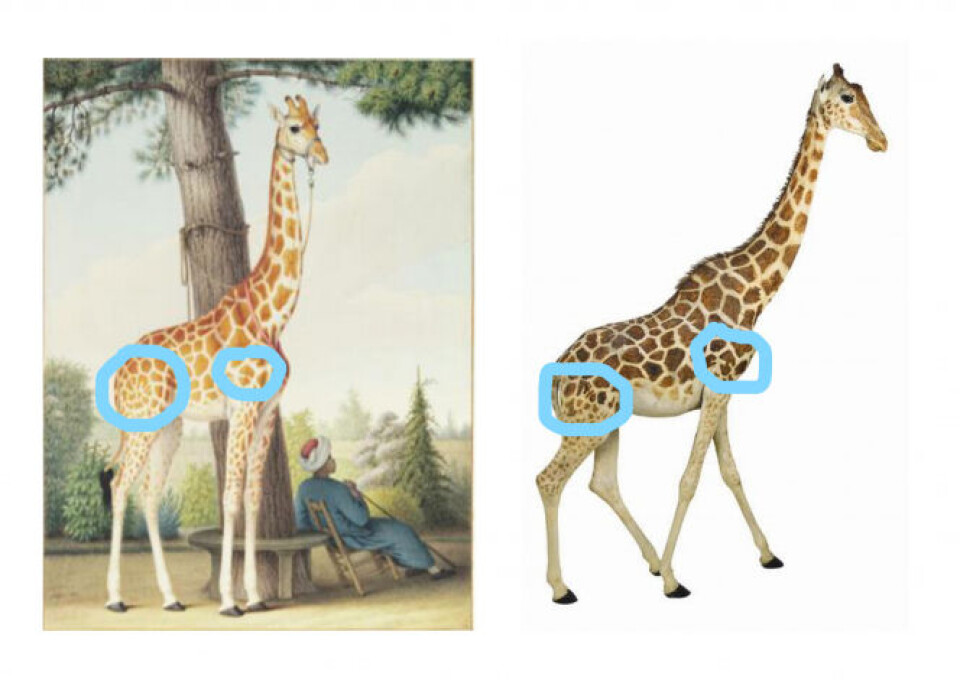-
Dog owner finds innovative technique in France to help traumatised rescue dog
How the Trust Technique helped one Connexion reader bond with her pet
-
New anti-mosquito operation in Dordogne: What residents must do
Close to 100 cases of chikungunya have been recorded in department
-
French homes overrun by ladybird invasion
Invasive Asian ladybird has been spotted in both France and UK amid food source boom
Incredible journey of France’s first giraffe
Zarafa generated ‘giraffemania’ in France, leading to many giraffe-based artistic outpourings which continued to recent times

The National museum of natural history in La Rochelle (Charente-Maritime) is the only place where tourists can see the remnants of Zarafa, the first giraffe that landed on foot in France and became a national sight-seeing exhibition sensation in Paris from 1827 to 1845.
The 4.3-metre-tall Zarafa has been exhibited since 1931 in a stairway section of the museum for the world to see thanks to exceptional conservation work that kept her almost pristine since she died.
She was offered to king Charles X by Egypt’s Pasha, Méhémet-Ali in 1827 in a diplomatic effort to escape the yoke of the Ottoman empire and seek Western sympathies toward independence, and then exhibited at Paris’ Jardin des Plantes.

Charles X depicted riding Zarafa. Credit: Public domain
‘Giraffemania’
Zarafa generated ‘giraffemania’, a frenzy from which the animal inspired paintings, writings, cartoonists, songs, French expressions and even pastries and – yes – a haircut.
But most of the animal’s story got lost in the throes of history before two American and French authors published separate books that triggered fresh interest.
“Zarafa is my personal connection with Africa,” said Olivier Lebleu, author of the book In the Footsteps of Zarafa and a retired journalist who became besotted with Zarafa due to family ties with the continent.
Mr Lebleu’s book inspired Zarafa, a 2012 motion picture that sold 1.4million tickets in France, and consolidated his position as one of the few experts of Zarafa’s story.
Zarafa landed ashore at Marseille’s port on October 23, 1826 and stayed during the winter season for acclimatisation before going on a 41-day trip to Paris, walking between 20 and 25 kilometres a day at the pace of 3.5 kilometres an hour.

Vase inspired by Zarafa's arrival in France. Credit: Public domain
600,000 visitors during summer of 1827
Zarafa arrived on June 30, 1827 at 17:00 and was transferred to the Jardin des Plantes, attracting 600,000 visitors during the summer of 1827. The animal remained there until its death on January 12, 1845.
The French expression “peigner la girafe’’ (‘comb the giraffe’) – which means to work on a long, boring and useless task – is believed to have originated from the caretaker’s onerous job of combing Zafara.
Its name derives from the Arabic words ‘gracious’ and ‘kind’ and was given by Michael Allin, an American author who wrote the first book on the history behind the giraffe’s adventure in 1998.
The skeleton perished during WWII while the skull is exhibited at the Galerie d’anatomie comparée of the Museum d’Histoire Naturelle in Paris (this was confirmed to The Connexion by the museum).
Austria and England were the two other countries that were gifted giraffes but both died (respectively after eight months and two and a half years) from dislocated knees caused by ill-adapted pavements, said Mr Lebleu.
Mr Lebleu is now looking to travel to Tanzania in 2023 to participate in a listing of endangered giraffes with an American charity. He is already planning something for the 200th anniversary of Zarafa’s landing in France.

Related links
Queen’s influence has led to rise corgis in France say breeders
Lions, crocodiles: How exotic animal ownership rules work in France























